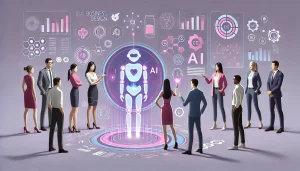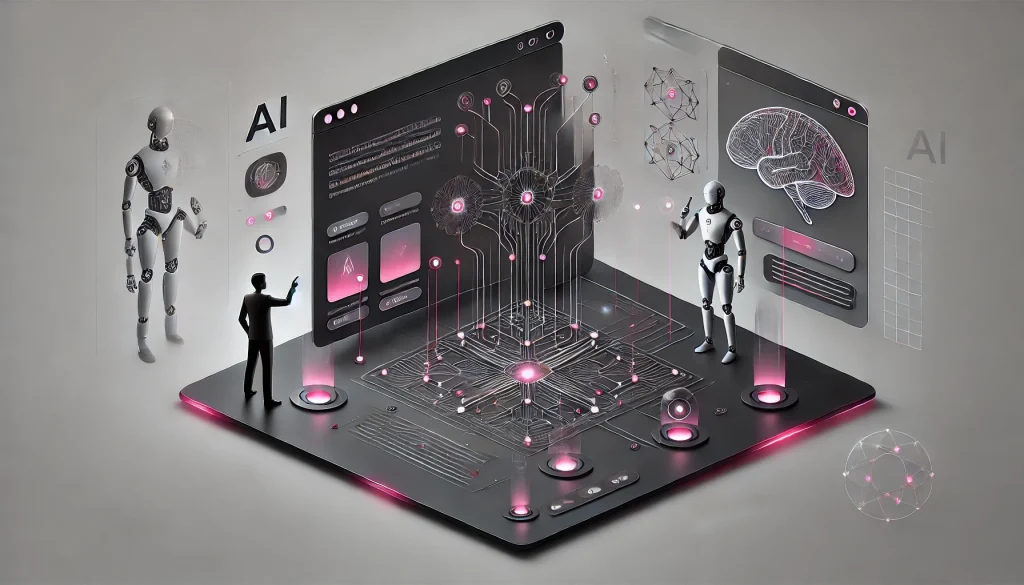
Artificial intelligence (AI) has been making waves in numerous industries, and web development is no exception. In particular, front-end development is witnessing a transformation thanks to the integration of AI technologies. What once required manual coding and design adjustments can now be automated and optimised using AI, allowing developers to create more efficient, visually appealing, and responsive websites. This article explores how AI is changing front-end development, its benefits, and how developers can adapt to these new technologies.
How AI is Revolutionising Front-End Development: Key Applications and Benefits

AI is transforming website design and development by automating repetitive tasks and personalising user experiences, allowing developers to achieve more in less time. With the global AI market projected to grow at a compound annual growth rate (CAGR) of 28.46% between 2024 and 2030, AI’s impact on web development is becoming increasingly significant.
Key areas where AI is revolutionising front-end development include:
- Automated Coding Assistance: AI-driven tools like GitHub Copilot suggest code snippets, reducing the need for manual coding and speeding up development.
- Design Optimisation: AI analyses user behaviour and makes real-time layout adjustments, improving both user engagement and conversion rates.
- Content Personalisation: AI dynamically adjusts website content based on user preferences, enhancing user experiences and boosting engagement.
- Error Detection and Debugging: AI tools identify coding errors or potential bugs in real-time, enabling developers to resolve issues faster and more accurately.
Automating Routine Tasks

Traditionally, front-end development involved manually writing HTML, CSS, and JavaScript. With the introduction of AI, many of these tasks can be automated, freeing developers from repetitive, time-consuming work. AI-powered tools analyse existing codebases and suggest improvements or fill in missing code. This helps reduce human errors and speeds up the development process.
By using machine learning algorithms, AI can also recommend the most efficient way to structure code, ensuring that it is optimized for speed and performance. A joint survey by OutSystems and KPMG revealed that 75% of software executives have noticed a reduction of up to 50% in development time through the implementation of AI and automation in the software development lifecycle (SDLC). This highlights how AI not just boosts efficiency but also reduces the need for extensive manual input, helping developers focus on more complex and creative tasks.
AI-Driven Design Systems
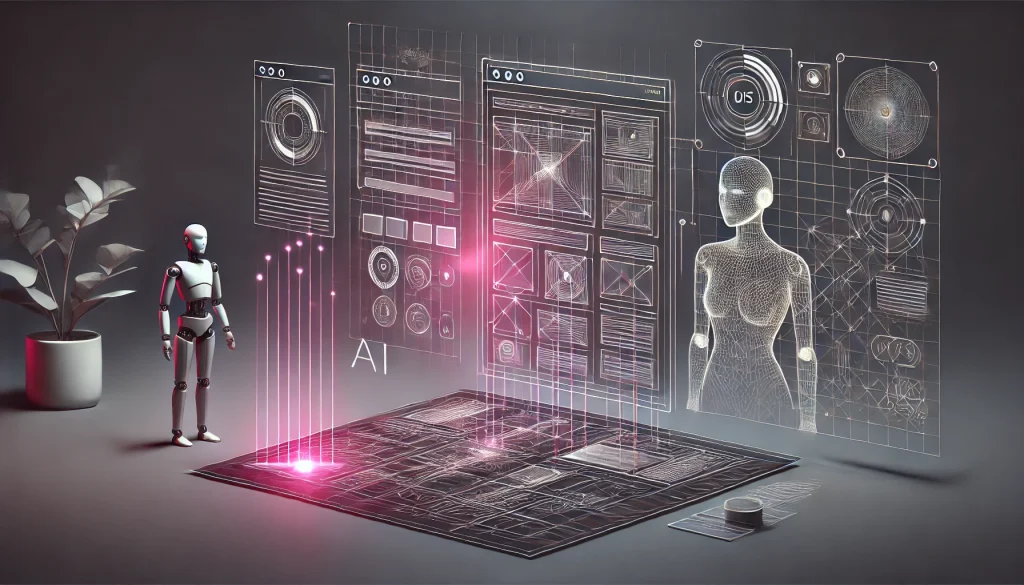
Another major innovation in front-end development is the use of AI to drive design systems. AI tools allow developers to convert hand-drawn wireframes into functional HTML code. This not only speeds up the development process but also ensures that designs are more consistent and responsive.
AI can also help with responsive design by analysing how users interact with websites across different devices and making real-time adjustments. Instead of relying on traditional breakpoints, AI can automatically optimise layouts for a variety of screen sizes, ensuring a seamless user experience.
Personalisation Through AI
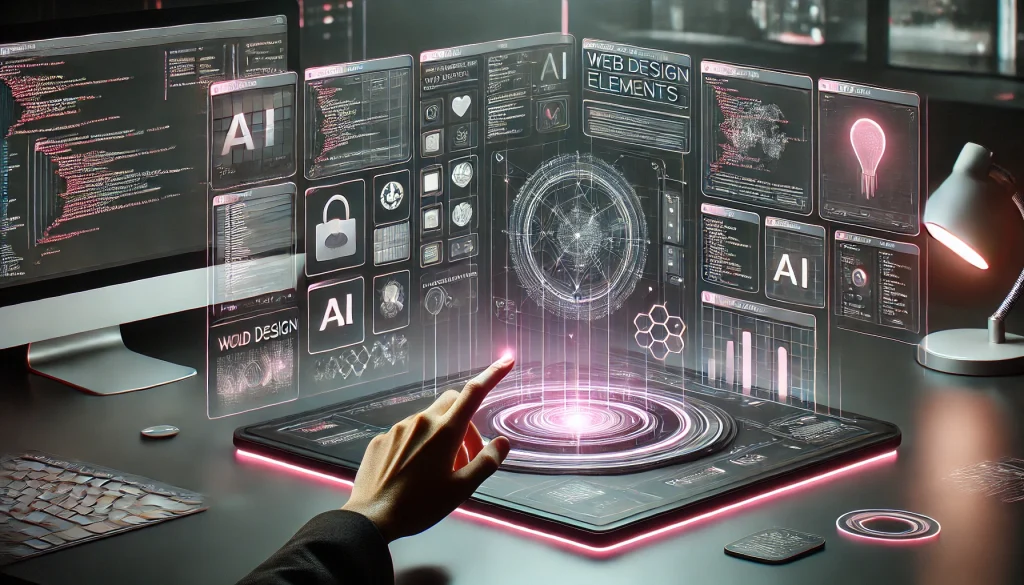
AI allows front-end developers to deliver highly personalised user experiences. Tools powered by machine learning can analyse user behaviour, preferences, and interactions to create personalised content, page layouts, or even entire user journeys. A report by Accenture found that 91% of consumers are more likely to shop with brands that provide personalised offers and recommendations.
By analysing user data, AI can dynamically alter the content a user sees based on their browsing habits, geographic location, or previous interactions with the website. For instance, e-commerce sites often use AI algorithms to recommend products based on past purchases or browsing history, driving engagement and boosting sales.
Improving Accessibility with AI
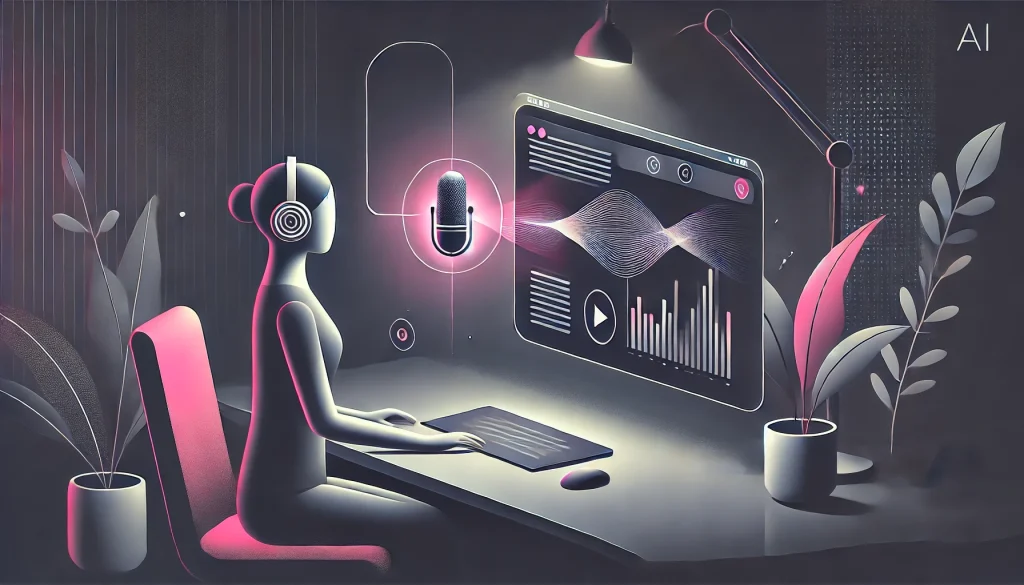
Making websites accessible to all users, including those with disabilities, is a crucial aspect of modern front-end development. AI is helping developers make websites more inclusive by automating accessibility improvements. AI-driven tools can analyse a website’s code and identify areas that may not comply with accessibility standards, such as missing alt text for images or insufficient colour contrast for text readability.
Additionally, AI can help generate alternative content for users with visual or auditory impairments. For example, AI can convert text into speech for visually impaired users, or generate captions for videos to make content accessible to those who are hard of hearing.
AI-Powered Testing and Debugging

AI’s ability to detect patterns in code has made testing and debugging far more efficient. Traditionally, front-end developers would spend a significant amount of time manually testing websites across different browsers and devices to ensure functionality.
Now, AI tools can simulate various environments, automatically identifying and fixing bugs before they become a larger issue. AI-powered testing tools, such as Selenium and Testim, use machine learning algorithms to perform automated testing on different parts of the website. This not only ensures better code quality but also helps developers deploy updates faster.
Natural Language Processing (NLP) in User Interfaces

One of the most exciting AI developments in front-end design is the use of natural language processing (NLP) to enhance user interfaces. Chatbots and voice search interfaces, powered by NLP, are becoming common on websites, enabling users to interact with websites more naturally. This shift toward conversational UI is making it easier for users to find what they need without navigating complex menus.
By integrating AI-powered chatbots, businesses can provide 24/7 customer support, improving user satisfaction and engagement. According to Gartner, by 2025, 80% of customer service and support organizations will be applying generative AI technology in some form to improve agent productivity and customer experience (CX).
Challenges of AI in Front-End Development
While AI brings numerous advantages to front-end development, it also presents some challenges. One concern is the potential over-reliance on AI, which could lead to a lack of innovation or creativity in design. Developers might rely too heavily on AI-generated suggestions, which could result in websites that feel generic or lack a unique brand identity.
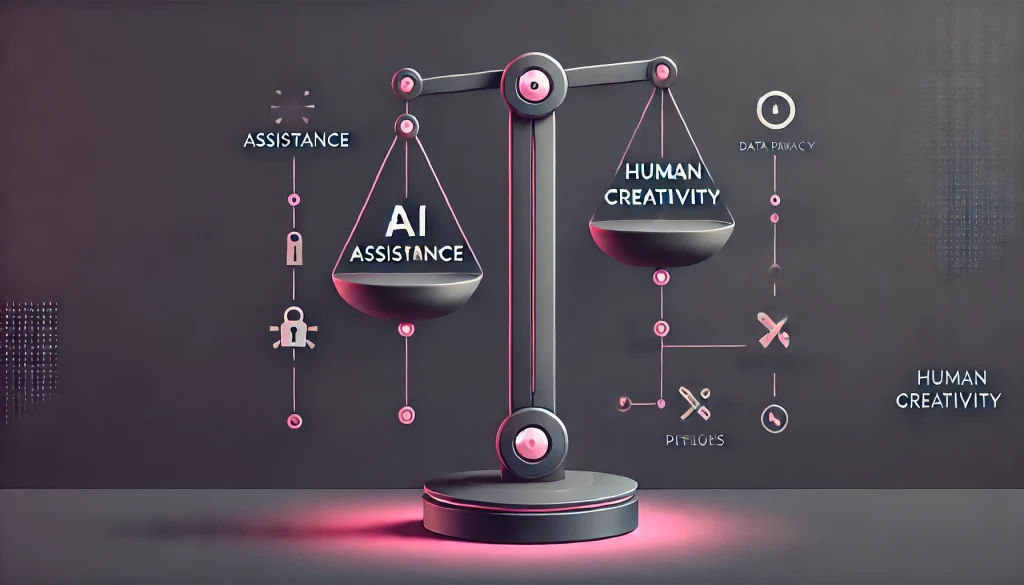
Another challenge is data privacy. Since AI-driven personalisation requires analysing user data, developers must ensure that data is collected, stored, and used in a way that complies with privacy regulations like the General Data Protection Regulation (GDPR). Failure to do so can result in hefty fines and damage to a company’s reputation.
The Future of AI in Front-End Development
As AI continues to evolve, its impact on front-end development will only grow. Advanced AI systems may soon be capable of creating fully automated design systems that adapt to user preferences in real-time. Developers will need to stay informed about the latest AI technologies and learn how to integrate them into their workflows effectively.
In the future, we can expect AI to enhance accessibility further, improve code efficiency, and simplify the testing process. AI will likely play a central role in creating more personalised, responsive, and accessible websites, making front-end development more efficient and user-centered.
Also Read: UX for AI: Balancing Complexity, Trust, and Security in Design






